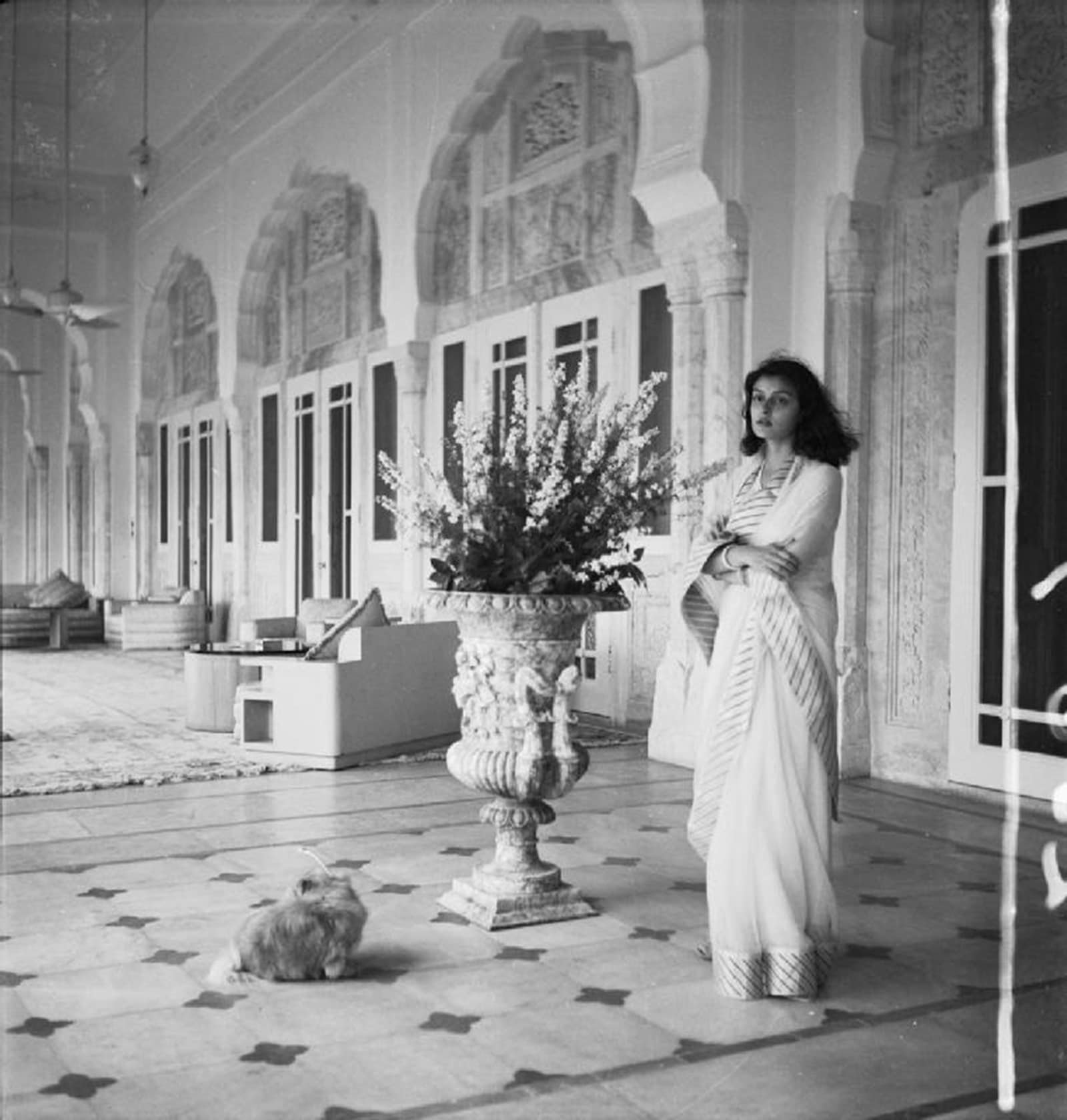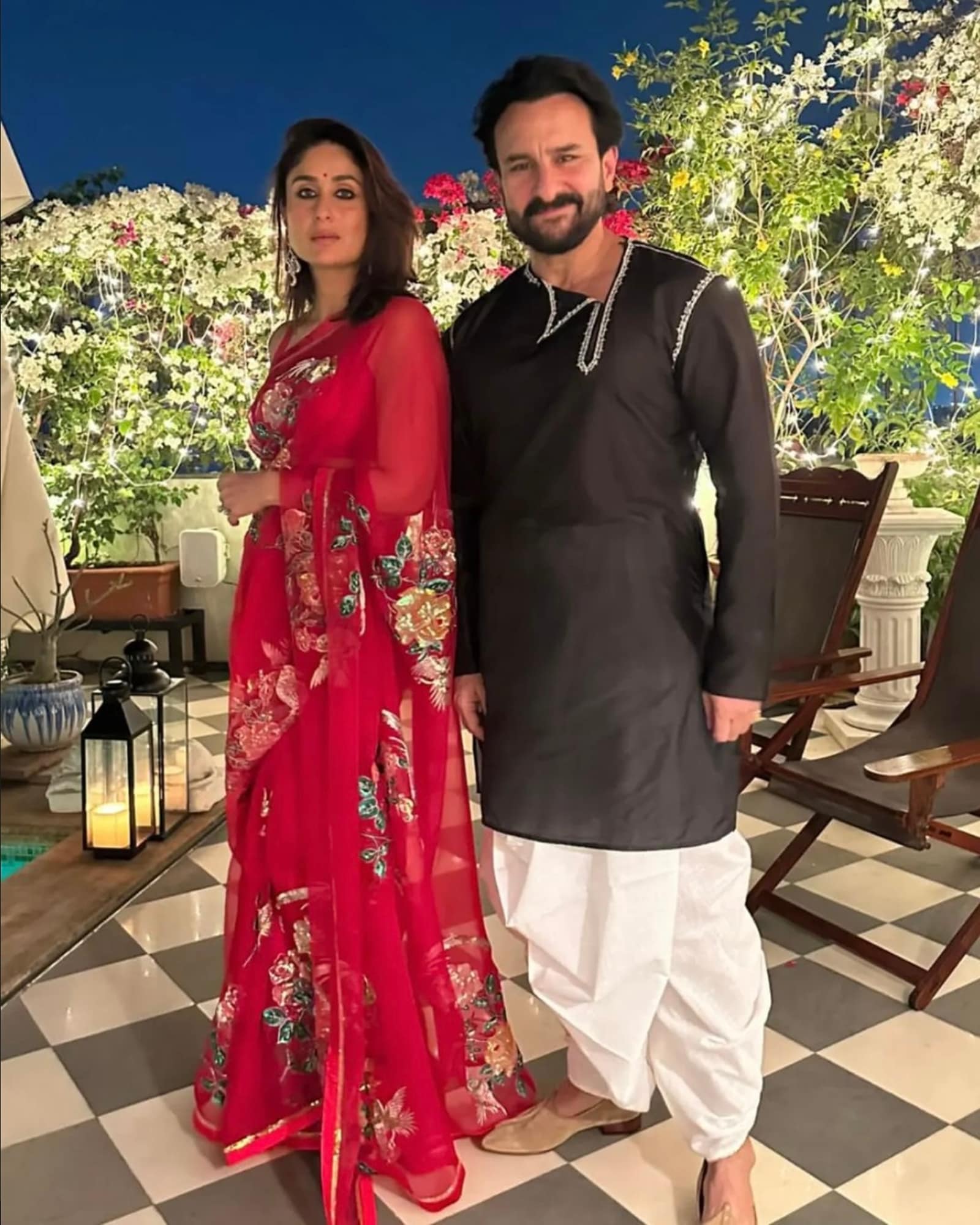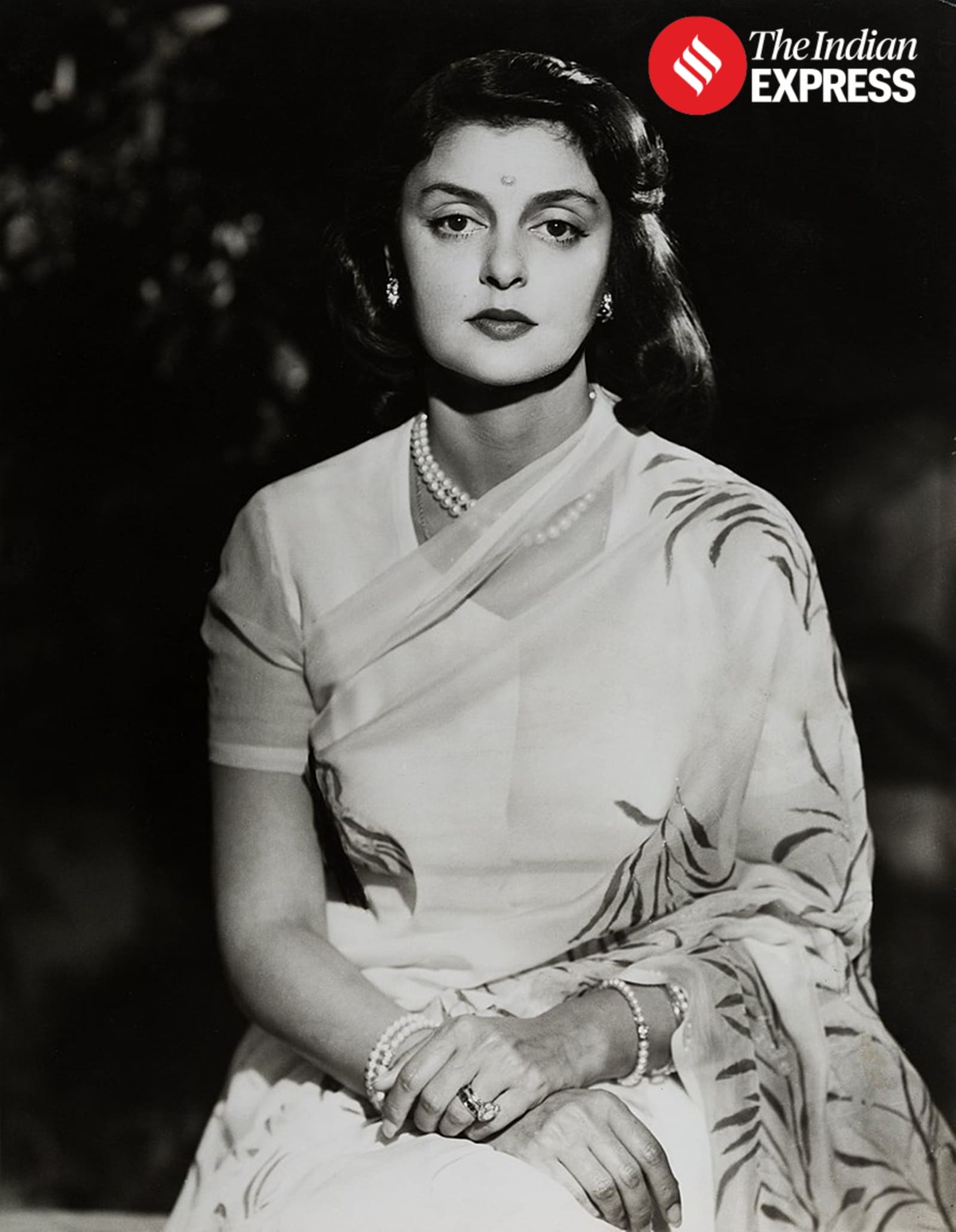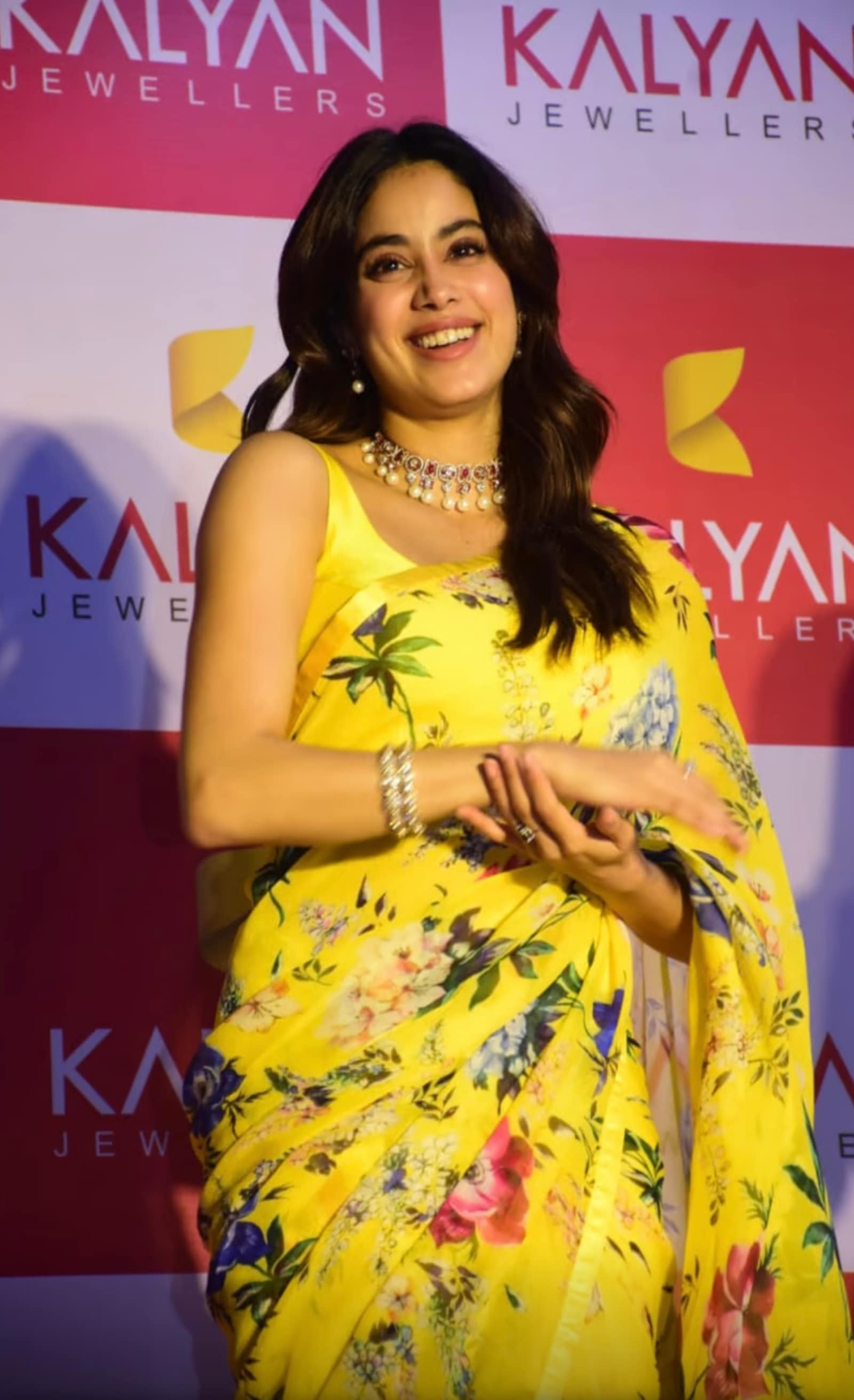Few fabrics rival the storied elegance of chiffon. Light, ethereal, and timeless, it has adorned queens and commoners alike, cementing its place as a symbol of grace. Among its most iconic champions was Maharani Gayatri Devi of Jaipur, whose effortless style elevated chiffon saris to royal couture. Inspired by her mother, Maharani Indira Devi of Cooch Behar, Gayatri Devi commissioned exquisite French chiffon saris, making them synonymous with understated luxury.
“Chiffon saris are the epitome of effortless elegance,” said Rohini Singh of Just Chiffons, a Jaipur-based label inspired by the personal styling preferences of India’s royalty. “My mother began making chiffon saris to preserve the charm of pure silk chiffon, which was otherwise hard to find, and that’s how our label was born,” she said.
 Inspired by her mother, Gayatri Devi popularised the fabric, commissioning yards of French chiffon to create saris that became synonymous with understated luxury. (Source: Wikimedia Commons)
Inspired by her mother, Gayatri Devi popularised the fabric, commissioning yards of French chiffon to create saris that became synonymous with understated luxury. (Source: Wikimedia Commons)
From ancient China to French haute couture and India’s regal courts, chiffon’s legacy is a journey through time and culture. Today, chiffon continues to enchant, weaving together centuries of craftsmanship, cultural evolution, and enduring beauty.
The origins of chiffon: From aristocracy to couture
Chiffon originated in ancient China as a luxurious silk fabric reserved for the elite. Its journey to Europe in the 1700s brought it into the hearts of French fashion, where it earned its name from the French word chiffe, meaning rag. But this name belied its opulence—chiffon was anything but common.
“Chiffon has always been synonymous with affluence,” said Mainak Dey, assistant professor of textile design at Pearl Academy. “It was first embraced by European nobility for its delicate texture and was later transformed into a global fashion statement.”
By the 19th century, chiffon became a favourite of high couture, celebrated for its ability to drape effortlessly and its semi-transparent quality that added mystique to every garment.
 Kareena Kapoor Khan in a chiffon sari from Atelier Shikaarbagh
Kareena Kapoor Khan in a chiffon sari from Atelier Shikaarbagh
The art of making chiffon
At its heart, chiffon is a weave rather than a material. Made using tightly twisted yarns—S-twist and Z-twist—it creates a subtle crinkle that defines its texture. The original chiffon, Mousseline de Soie, was crafted entirely from silk. The process was intricate, with threads spun and woven to achieve a fabric so delicate it seemed almost weightless.
Story continues below this ad
“Handwoven silk chiffon is a rarity today,” said Maayankraj Singh of Atelier Shikaarbagh. “Modern mechanisation has replaced traditional methods, but producing authentic chiffon still takes time—up to seven or eight days for a single bale.”
Synthetic chiffon, made from polyester or nylon, emerged in the mid-20th century as a cheaper alternative. Though quicker to produce, it lacks the softness and breathability of natural silk chiffon. Designer Jaykirti Singh explains, “Synthetic fibres are extruded and woven in a plain weave to mimic chiffon’s texture, but they don’t carry the same tactile luxury.”
Chiffon’s Indian Legacy
Chiffon’s entry into India is steeped in royal history. Maharani Indira Devi of Cooch Behar, impressed by the fabric during her travels in France, envisioned its light, flowing quality as perfect for saris. Her commissions led to the adaptation of chiffon into traditional Indian attire, setting a trend embraced by her daughter, Maharani Gayatri Devi.
 The then Maharani Gayatri Devi in her trademark chiffon sari (Express archive)
The then Maharani Gayatri Devi in her trademark chiffon sari (Express archive)
“It’s fascinating to think how a single fabric could influence an entire aesthetic,” said Rohini.
Story continues below this ad
Differentiating real from synthetic chiffon
In a market flooded with imitations, recognising authentic chiffon is essential. Silk chiffon is soft, luxurious, and has a delicate sheen, while synthetic versions often feel plastic-like and overly shiny.
“A simple burn test can tell you the truth,” said Dey. “Silk chiffon smells like burnt hair and leaves brittle ash, while synthetics melt and emit a chemical odour.” “Price is another indicator—genuine silk chiffon is way more expensive,” said Rohini.
Chiffon’s evolution and need for revival
Chiffon has adapted to the times, from its origins in silk to its widespread use in synthetic blends. Its versatility has made it a favorite for saris, gowns, lingerie, and even home décor. However, this evolution raises concerns about sustainability.
 Janhvi Kapoor in a chiffon sari from Atelier Shikaarbagh
Janhvi Kapoor in a chiffon sari from Atelier Shikaarbagh
“Polyester chiffon may be economical, but it’s not biodegradable. Revitalising chiffon involves promoting organic silk and recycled fibres while preserving traditional weaving techniques,” said Dey.
Story continues below this ad
Maayankraj stressed the role of consumers: “Investing in authentic chiffon supports artisans and keeps this legacy alive. A pure chiffon sari is not just a purchase—it’s a tribute to centuries of craftsmanship.”
By embracing authentic chiffon, we ensure its story continues to flow—light as air, enduring as time itself.


